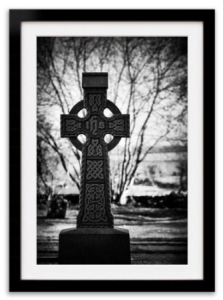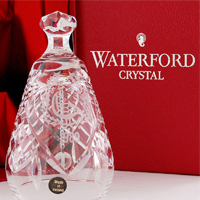The History of The Irish Cross
The history of the Irish Cross, or Celtic Cross, has many versions. The first one I heard was that it was developed by St. Patrick during the Pagan conversion to Christianity. I was told that the circle in the center of the cross represented the Pagan Sun God. This version says that, during St. Patrick's conversion, he used some Celtic symbols as a method of gradual blending to link the Pagan religion of old to the new Christian religion. He also used the three leaves of the shamrock as a teaching tool to represent the holy trinity. Many centuries before Christ, most civilizations around the world worshipped stone gods and idols. Their high gods mostly revolved around the sun and even the placement of their buildings, tombs and the layout of their cities had something to do with the sun. While this style of cross is likely to have its origin in Ireland, it can also be found in other parts of the British Isles, with the possibility it arrived there via Irish missionaries.
Some scholars have suggested that the ring represents a halo and, therefore, Christ himself. This theory is close to the suggestion that the circle represents the sun god or the moon god. Another theory is that the ring was introduced by masons, who were simple craftsmen adding a bit of stability to the construction. For an Irish Catholic, the circle may be a symbol of eternity and the endlessness of God's love. It could also be argued that there may be no hidden symbolism at all. Whatever its origin, the historical development of this unusual cross is even more confusing, but it is improbable that some Irish clerics carefully chose it as a trademark and specifically designed it that way.
High Crosses, Celtic Crosses and Irish Memorial Crosses are seen as synonymous but they are not. The High Cross was erected for one reason only, which was to mark a sacred place; and, as a sign for all those who came upon it, that it was hallowed ground. Apart from this, the crosses were also a point of celebrations. The typical layout of the early monastic settlements included a church, a cross and a round tower. The church was usually too small for even a modest congregation, which meant that the mass was performed outside, around the cross. Some High Crosses seem to have been erected to distinguish territorial rights, while others were erected to commemorate an important event or person. The only use High Crosses were not intended for were as grave markers.
No historian can tell us where, when, or why the first High Crosses were erected. It is assumed that the first stone crosses were copied from wooden crosses covered with metal. Many of the features of the earlier wooden crosses were incorporated into the design. Some crosses of this type are from the 8th and 9th century, like the northern cross at Ahenny, County Tipperary, which is covered in geometrical designs. The most important feature was the basic form of the cross itself, not necessarily representing Christ's crucifixion, but as an image of the early chi rho monogram or warriors cross. Later crosses were more pictorial, such as the southern cross at Clonmacnoise and the Cross of Saints Patrick and Columba in Kells.
The Celtic Cross evolved in the British Isles, with it's earliest form dating to the ninth century and found mostly in Ireland. This early version is called a recumbent cross slab and they lay flat rather than standing upright. Eventually they evolved into an upright position, called erect cross slabs. Both versions were decorated with Celtic patterns like interlaced knotwork and spirals. The Celtic cross underwent another change by carving the extraneous rock away from the slab, leaving the outlined shape of a tall cross, usually wider at the base. These types of crosses were commonly known as erect free-standing crosses. They were elaborate in design and often made up of several pieces of stone, held together by joints carved into the stone.
The Celtic Cross and Irish Cross shape had been widely used by ancient civilizations long before the arrival of Christianity. Its four arms were perfect for denoting the four elements, the four seasons, the four directions of the compass, and the four parts of man (mind, body, soul and heart). The addition of the ring around the cross has had many explanations but perhaps it was simply created because it was aesthetically pleasing.
Disclaimer: LittleShamrocks.com is an affiliate website that receives commissions from sales of the products listed. We have purchased and sampled many, but not all, of the products on these pages.
© Copyright LittleShamrocks.com. All Rights Reserved.





